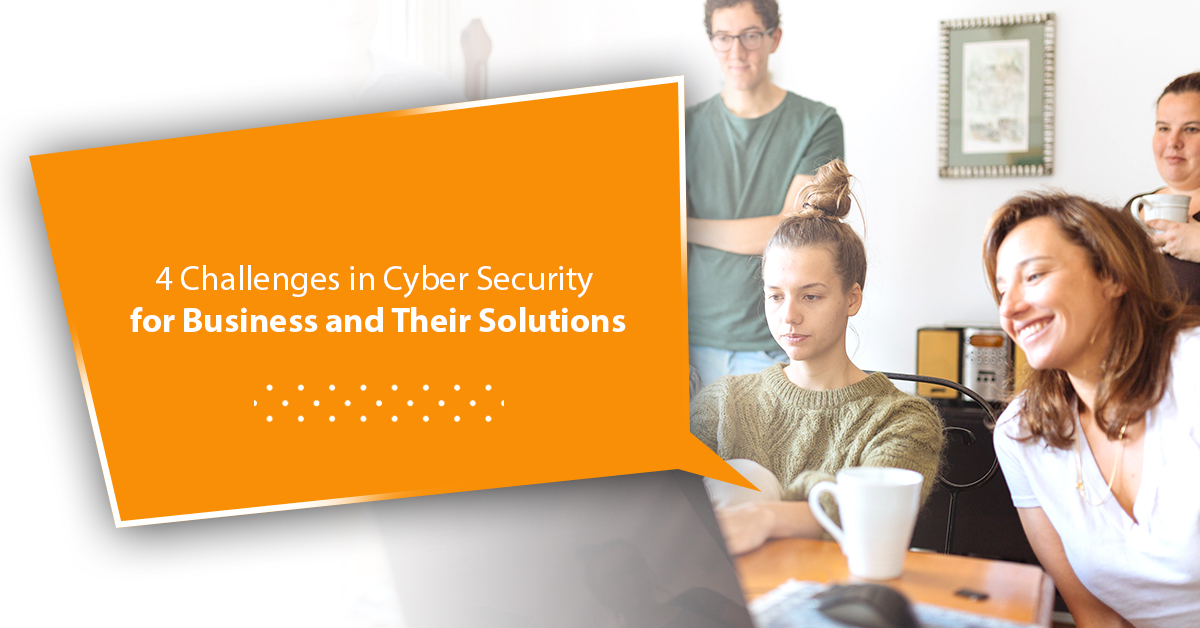
Cyber security is a fundamental part of information security for modern organisations that need to save and store a lot of information in digital formats on computers, IT (Information Technology) devices, software solutions, and cloud databases. This started with changing technology landscape in businesses where everything is internet-based. Therefore, cyber security is most associated with the threats coming from using the internet. While information security was about protecting the data stored in paper-based files or computer systems so that intruders couldn’t get them, cyber security is about protecting digital information against malicious attempts by fraud internet users. Needless to say, cyber security in business can be an enormous challenge.
The following section takes you through 4 common challenges in cyber security that most organisations face, and you might too. We have also provided appropriate solutions to address each.
The most common cyber-attack faced by organisations is phishing. It occurs mainly due to the high level of interactions that happen in all businesses among their members (internal and external) on various modes of electronic communication. Phishing attacks are targeted therefore through emails, chats, or text messages. They appear to be a readable or important message from a reputable source or sender but clicking on them is risky. The attackers use them to trick someone to provide personal information or some sensitive business information. Such attacks are increasing day by day because more information exchanges are taking place through emails and other electronic modes among employees and business partners.
To prevent phishing attacks, employees need to watch out for unusual messages and prevent clicking on any suspicious links given in any message. If they are in doubt, they should always contact the source first.
Malware is the most widespread term within cyber-attacks. Malwares are malicious forms of software that get installed in the computer to harm it. Some of the key attacks that malware can launch after entering a computer system are encryption of data, deletion of data, stealing of data, tracking of users’ activity, and hijacking of key functions. The malware threats usually enter through hard drives, internet downloads or browsing activities, and USB external drives.
Ransomware is used to hack a computer or its certain files or databases to hold all the information hostage until the victim agrees to pay a ransom. Ransomware is dangerous and mainly comes through phishing emails and infected websites.
To prevent both malware and ransomware, organisations need to make sure that all computer software, and installed plugins as well as drivers, are updated. It is also necessary to remove any old software or Legacy apps from their new computers.
As the term mentions, database exposure is a security breach that exposes the organisation’s information database to hacking, fraud, or thefts. Mostly database exposure leads to leakage of essential personal information of the customers such as names, email, addresses, phone numbers, and birth dates. Hackers can harvest the information to cause social engineering attacks.
To prevent database exposure, you need to maintain a private server in a physically protected and safe room. Secondly, you need to make sure that you have firewalls including web application firewalls to protect the servers working on the internet. You also should limit the access to your server with restricted logins. Lastly, make sure to encrypt all your data on the server and do not forget to have a regular backup system.
There is an increase in cloud-based services since the adoption of remote working facilities due to COVID-19. The trend is supposed to continue even in the future as there are many benefits of using cloud services that businesses have started experiencing. Some of them are scalability, lower costs, faster information sharing, and restricted accessibility. However, cloud services have become a prime attraction of cyber-attackers too. Some of the vulnerabilities are insecure APIs (Application user interfaces), misconfigured cloud storage, breach in access, and malware.
If you are using cloud-based services, you should be aware of the security measures that are needed to prevent the vulnerabilities. Also, before completing the migration of your workload to the cloud, you should always make a backup.
These are some of the prominent challenges in cyber security for businesses that can only be conquered by being proactive and implementing strong cyber security measures. Organisations that have definite information security policies and have a strong management system can better address all kinds of cyber security risks. Therefore, you should do that too. Investing in an Information Security Management System (ISMS) such as ISO 27001, which also promotes cyber security practices, should be a compulsory requirement in your business to withstand all these key cyber security challenges.
Need help to implement your ISMS or strengthen it with an ISO certification? At Compliancehelp, we have a team of expert information security consultants who can assist you. Feel free to contact.

Get connected with us on social networks!